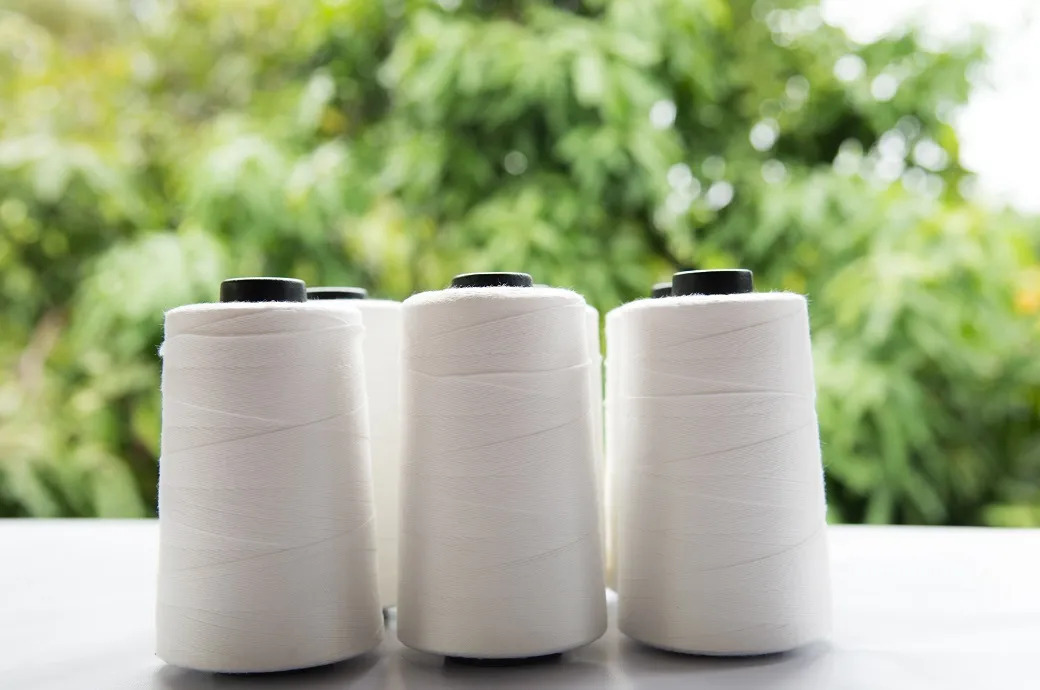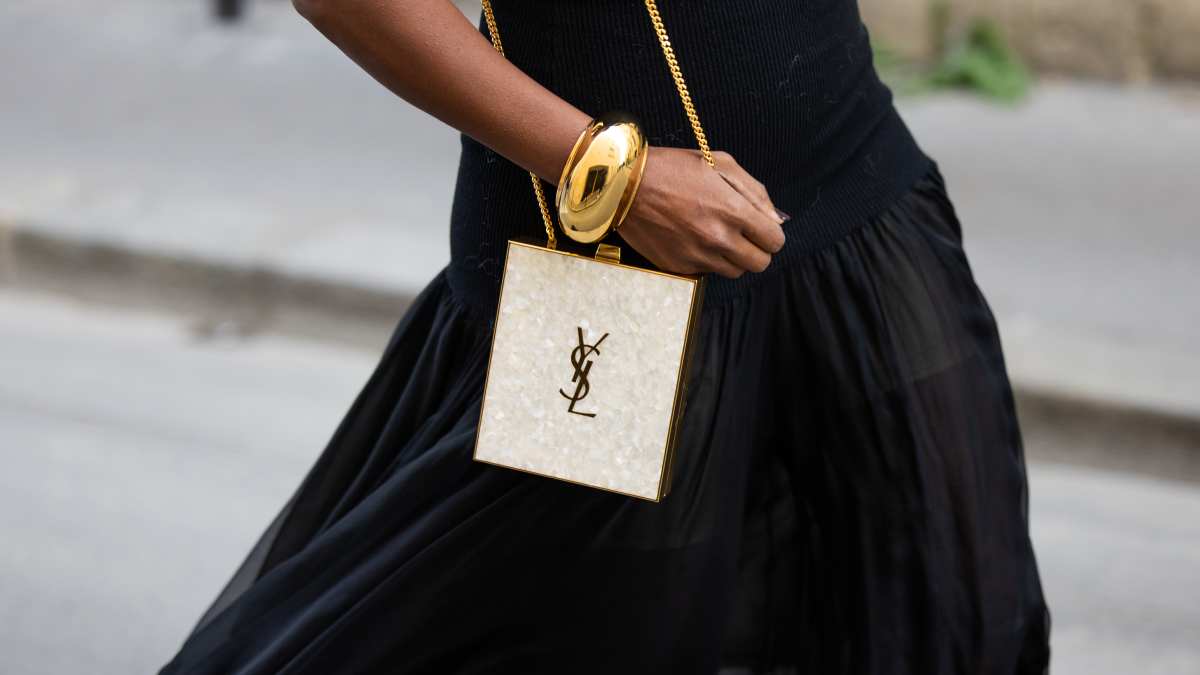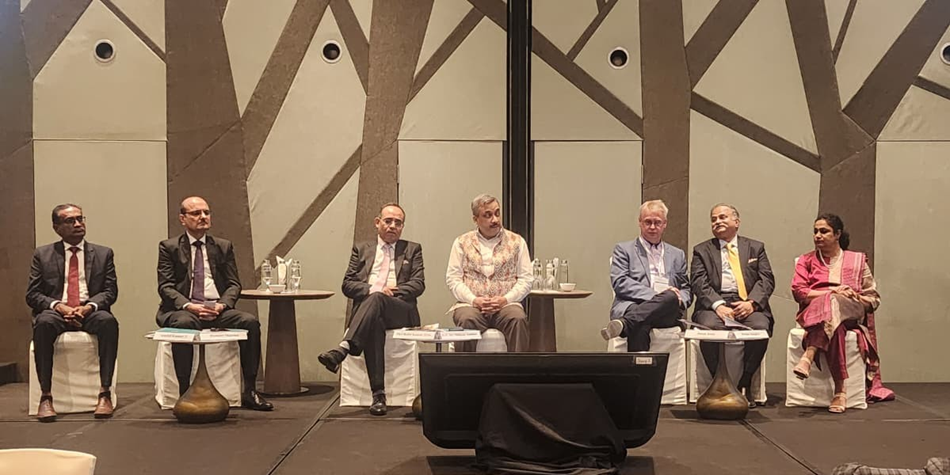FW
Garment manufacturers in Bangladesh are setting their sights on an additional $5 billion in annual export earnings following a crucial policy adjustment by the government regarding the deemed export status for certain auxiliary industries. This strategic move aims to resolve long-standing tax issues and reduce operational costs for garment factories, thereby boosting their competitiveness.
The dispute centered on whether utility providers (like power companies) and certain support industries (like laundries, dyeing, and embroidery) selling services to Export-Oriented Garment (EOG) factories should qualify as ‘deemed exporters.’ When this status was challenged, these service providers lost tax benefits, leading them to charge EOGs higher prices, effectively raising the garment sector’s production costs.
The government has reinstated and clarified the deemed export status for these critical support industries, making them once again eligible for tax breaks, including a crucial Value Added Tax (VAT) exemption on their sales to garment makers.
By exempting these intermediate goods and services from VAT, the cost of production for garment makers - especially those involved in intricate dyeing, washing, and finishing—is expected to fall significantly.
Industry leaders, including those from the Bangladesh Garment Manufacturers and Exporters Association (BGMEA), believe this reduction in operational costs will make their products more price-competitive globally. They project this single policy adjustment could immediately contribute to an extra $5 billion in annual export value. The move is critical for maintaining Bangladesh's edge against competitors like Vietnam and India, especially in the context of rising global inflation and buyers demanding lower prices.
This clarity provides predictability for businesses, encouraging both domestic and foreign investors to invest in modernizing dyeing, washing, and finishing facilities, which are essential for producing high-value apparel.
The consensus is that by resolving this tax ambiguity, the government has given a much-needed push to the garment sector, allowing manufacturers to focus on securing larger orders and pushing up export earnings.

The historic economic understanding between US President Donald Trump and Chinese President Xi Jinping, reached in Busan last week, may have eased pressure on a few politically sensitive commodities like soybeans and rare earths but for the $350-billion global textile and apparel trade, it has brought only a brief pause in turbulence, not a turnaround.
For US apparel importers and Asian exporters alike, the one-year tariff truce means a freeze on pain rather than a path to recovery. The looming threat of a 100 per cent tariff has been averted, but the punitive 47 per cent cumulative tariff on Chinese garments remains intact, locking both economies into a fragile, high-cost equilibrium. “For our customers, this is not a rate cut; it’s a freeze on a heart attack,” says Sarah Chen, a US-based trade consultant. “The existential threat is gone, but the long-term reality is that US apparel remains the most expensive in the world to import from China.”
Tariffs still weave the costliest fabric
The agreement leaves the core of Section 301 duties untouched. While overall tariffs on Chinese imports have been lowered from an average of 57 to 47 per cent, the apparel sector, unlike semiconductors or agri-inputs remains excluded from substantial relief. For US retailers, that means duty payments continue to eat into already thin margins. Apparel brands are caught between absorbing the cost or passing it to consumers each option eroding competitiveness.
Table: Tariff burden on US apparel importers
|
Item |
FOB cost (per unit) |
Existing US tariff rate (approx.) |
Duty paid (per unit) |
Total landed cost |
|
Men's Cotton Shirt |
$15.00 |
47% (Cumulative Rate) |
$7.05 |
$22.05 |
|
Women's Knit Sweater |
$20.00 |
47% (Cumulative Rate) |
$9.40 |
$29.40 |
|
Industry Average |
$100.00 |
47% |
$47.00 |
$147.00 |
Source: Industry estimates and White House Fact Sheet on new 47% cumulative rate.
The table underscores how the 47 per cent cumulative tariff continues to define the landed cost structure for US apparel importers. Even with the Busan truce, a men’s cotton shirt priced at $15 FOB effectively costs over $22 after tariffs, a 47 per cent boost before logistics and retail markup. For brands, this means the average imported garment from China remains nearly one-and-a-half times its base manufacturing price by the time it clears customs. The tariff freeze, while avoiding further escalation, keeps operating margins severely compressed. In retail terms, this has translated to sustained 5-8 per cent higher shelf prices for mid-market US fashion brands. It also means deferral of private-label expansion, as companies hesitate to commit to China-heavy supply chains. And greater inventory concentration in tariff-free categories, like accessories or blended-origin products. In essence, the US apparel supply chain remains structurally uncompetitive as long as Section 301 tariffs persist turning stability into stagnation.
Cotton relief a rare win for china’s textile mills
The only direct relief for the textile supply chain comes from China’s decision to suspend its 25 per cent retaliatory tariffs on US cotton. This move reopens a crucial artery of trade between the world’s largest cotton consumer and the US, its traditional supplier.
Table: Impact of China's suspended retaliatory tariff on US cotton
|
Metric |
Before truce (with China retaliatory tariff) |
After truce (tariff suspended) |
Impact |
|
US Cotton Import Tariff (China) |
25% (Retaliatory Duty) |
0% (Suspended) |
Direct cost reduction for Chinese mills. |
|
Price of Imported US Cotton (per metric ton) |
$1,900 (est.) |
$1,520 (est.) |
US cotton is now cheaper for Chinese buyers. |
|
Cost to Chinese Apparel Maker |
High (due to expensive input) |
Lower (due to cheaper raw material) |
Improved competitiveness. |
This data highlights a rare mutual win in the trade standoff: the removal of China’s retaliatory duty on US cotton. By cutting the tariff from 25 per cent to 0 per cent, Chinese mills immediately save about $380 per metric ton of cotton, restoring direct access to high-quality American fiber. The ripple effects are significant. Chinese textile mills regain cost competitiveness versus peers in India and Pakistan, where raw cotton prices remain volatile. US cotton farmers, particularly in Texas and Mississippi, regain access to their largest export market, stabilizing prices that had fallen 18 per cent in 2024. And global yarn prices could ease modestly (2-3 per cent), as cheaper cotton inputs filter through production chains.
This cost reprieve reinforces China’s upstream strength in yarn and fabric production, offsetting the disadvantage of high tariffs on finished goods. It also revives interdependence between the US cotton belt and China’s textile heartlands a pragmatic economic bridge amid ongoing political friction.
The ‘China Plus One’ strategy meets a pause
The truce reshapes the momentum for Vietnam, Bangladesh, and India three major beneficiaries of the US-China trade war. For years, these countries absorbed diverted apparel orders as brands sought to derisk from China. The 47 per cent tariff freeze, however, slows that diversification push by reducing near-term urgency.
Table: Comparative US apparel tariff rates post-truce
|
Sourcing country |
US apparel export value (2024 Est.) |
Average US tariff rate (approx.) |
Importer savings vs. China |
|
China (Benchmark) |
$30.0 bn |
47% |
N/A |
|
Vietnam |
$15.3 bn |
15% - 20% |
27 - 32 ppt |
|
Bangladesh |
$10.0 bn |
20% |
27 ppt |
|
India |
$5.0 bn |
50% (Subject to new specific duties) |
-3 ppt (Net Loss) |
Source: WTO, USITC, and apparel trade association estimates
Vietnam and Bangladesh still enjoy substantial tariff advantages, but the freeze on escalation weakens their investment narrative. China’s cheaper input costs (via US cotton) may even enhance its competitiveness relative to its Southeast Asian neighbors, given Vietnam’s heavy dependence on Chinese fabrics.
India, in contrast, faces an unexpected reversal. Following new US-specific duties on Indian textile products, its exports have become more expensive than Chinese goods, a significant blow to the Make in India agenda and to its rising role as a diversification hub.
Ripples across Asia
Vietnam’s wait-and-watch policy: Knitwear factory in Hanoi saw order volume rise 40 per cent (2021-24). Large US orders are now on hold as buyers reassess supply chain risk. The focus is on value-added, high-quality SKUs where tariff savings outweigh higher production costs.
Bangladesh’s volume-driven stability: High-volume denim and T-shirt manufacturer in Dhaka saw minimal downside and 27-point tariff gap with China keeps orders flowing. Their strategy is aggressive pursuit of volume contracts to lock in low-cost market share.
The regional case studies demonstrate how each manufacturing hub is adapting its playbook to the truce’s partial stabilization. Vietnam’s growth boom is pausing as US buyers wait for the next tariff cycle. Bangladesh’s mass-production model remains robust, sustained by low tariffs and entrenched scale. India faces an uphill climb as recent US duties reverse its cost advantage, forcing exporters to pivot toward EU, Middle East, and Japan markets instead.
Together, they illustrate a clear strategic theme: tariff policy now determines investment flows more than cost efficiency or labor advantage. And these contrasting outcomes highlight the new fragmentation of Asia’s apparel ecosystem.
The bottomline is that the Busan agreement buys the textile trade one more year of predictability but not peace. The 47 per cent tariff remains the binding thread that dictates sourcing costs, retail pricing, and investment flows. The upside lies primarily in cotton price normalization and supply chain stability. The downside is strategic paralysis: no meaningful relief for US importers, no new stimulus for Southeast Asia, and a worsening competitive position for India. “The trade war isn’t over, it’s just between seasons,” opines a senior executive at a US apparel conglomerate. “Everyone’s waiting for the 2026 renegotiation to know whether to rebuild in China, or to finally move out for good.”
And for now, the global textile and apparel trade hangs together stabilized by compromise, yet constrained by cost. The Busan truce is a temporary patch, not a repair. As 2026 looms, the industry faces a familiar dilemma: adapt under a heavy tariff blanket, or unravel when the next round of negotiations begins.
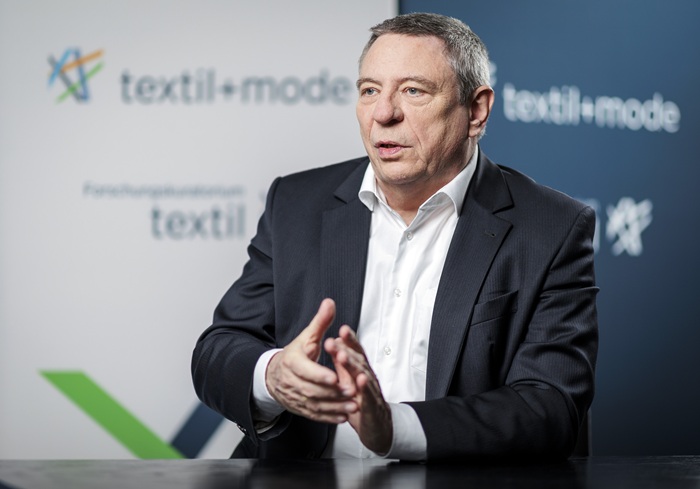
The German Textile and Fashion Industry Federation (Gesamtverband textil+mode) is urgently warning the German Bundestag about the potential negative consequences for small and medium-sized enterprises (SMEs or Mittelstand) stemming from the currently debated public procurement law reform. Uwe Mazura, CEO of the Federation, stressed the need to safeguard access for SMEs to public contracts, particularly those with the Bundeswehr (German Armed Forces).
The Federation's appeal comes ahead of a public hearing of the Committee for Economic Affairs and Energy in the German Bundestag on the Bundeswehr's planning law, scheduled for November 10. While acknowledging and welcoming the goal of making procedures more efficient, Mazura cautioned that the reform's design "must not be at the expense of small and medium-sized enterprises," warning that if the draft regulations are passed as is, "the Mittelstand is once again in danger of drawing the short straw".
Critical concerns with the proposed reform
The Federation identifies several key areas of concern within the proposed reform that could structurally disadvantage smaller businesses. The planned expansion of direct awarding (Direktvergabe)—where public contracts can be granted immediately without a tender process—is viewed as particularly critical. This system primarily benefits large companies with established government contacts and extensive service offerings, making it difficult for smaller businesses to be considered. The industry considers the softening of the established "lot procedure" (Losverfahren), which previously required the mandatory division of large contracts into smaller lots as a central instrument for ensuring SME participation, a setback. Relaxing this rule risks centralized large-scale procurements, detrimental to many specialized businesses. Furthermore, the proposed limitation on the legal reviewability (rechtliche Nachprüfbarkeit) of the procurement process is seen as jeopardizing legal certainty. SMEs, in particular, rely on transparent and verifiable procedures, and weakening these control mechanisms would also structurally disadvantage them.
Demands for fairer competition To secure fair competitive conditions, the Gesamtverband textil+mode is urging a revision of the reform in favor of the Mittelstand, calling for the following specific measures: They demand a mandatory procurement quota for SMEs, meaning a legally defined share of public contracts should be reserved for small and medium-sized enterprises. The retention of the lot procedure is also necessary, insisting the obligation to divide large contracts into smaller lots must be maintained. The Federation requires transparent procedures, meaning all procurement processes must remain traceable and reviewable, without restricting legal reviewability. Lastly, they are calling for equal opportunities in direct awards, ensuring that medium-sized suppliers must also be considered even in accelerated procedures.
CEO Mazura concluded with a powerful statement: "Politicians praise the Mittelstand in all their Sunday speeches: It is the backbone of the economy. If we now make it more difficult for them to access public contracts, we weaken not just individual companies, but entire value chains in Germany and Europe," he said. He stressed that a procurement reform "must not become an open door for distortion of competition; it must ensure equal opportunities for all companies, regardless of size".
A major designer, marketer, and licensor of footwear and apparel, Wolverine World Wide, Inc appointed Justin Cupps as the new President of its Work Group.
In this critical leadership position, Cupps will be responsible for overseeing several key brands, including Wolverine, Bates, CAT Footwear, Harley-Davidson Footwear, HyTest, and Merrell Work. He will report directly to Chris Hufnagel, President and Chief Executive Officer of Wolverine Worldwide, and will join the company’s Executive Team.
Chris Hufnagel, CEO, says, Cupp’s entrepreneurial spirit and team-first approach make him an ideal fit to lead the Work Group today as it drives to build awesome products and tell amazing stories—focused squarely on their consumer and ultimately delivering value to their shareholders.
Cupps brings nearly 30 years of experience driving growth and innovation across global consumer brands such as Under Armour, adidas, Gant, and AND. Most recently, he served as Senior Vice President, North America Sport Performance Brands at EssilorLuxottica, where he managed a $1.25 billion portfolio anchored by Oakley and Costa del Mar.
Founded in 1883 and based in Rockford, Michigan, Wolverine World Wide, Inc. is one of the world’s leading companies in branded footwear and apparel. Its portfolio includes well-known names such as Merrell, Saucony, Sweaty Betty, Hush Puppies, Wolverine, Chaco, Bates, and Stride Rite. The company is also the global footwear licensee for the popular Cat® and Harley-Davidson brands. Wolverine Worldwide’s products are sold in approximately 170 countries and territories globally.
Grasim Industries’ achieved its highest ever revenues of Rs 9,610 crore, up 26 per cent Y-o-Y in Q2, FY26. This was largely attributed to the stable contributions from core segments like Cellulosic Fibers and Chemicals.
The company's Trailing Twelve Months (TTM) consolidated revenues reached Rs 1,59,663 crore, reflecting an 8 per cent increase compared to the previous fiscal year (FY25). For Q2FY26, consolidated revenue stood at Rs 39,900 crore, up 17 per cent Y-o-Y. This strong growth was primarily fueled by the performance of the Building Materials and Chemicals businesses.
Grasim’s consolidated EBITDA in Q2FY26 increased by 29 per cent Y-o-Y to Rs 5,217 crore. This increase was mainly driven by higher profitability in the Cement and Chemicals businesses. Its consolidated Profit After Tax (PAT) grew by an impressive 76 per cent YoY to Rs 553 crore.
Grasim Industries is positioned to benefit considerably from India’s widespread economic momentum. Its diversified portfolio, backed by strategic capital deployment and scale-building initiatives across key sectors, gives it a unique advantage as the country enters its next phase of development.
The Government's ambitious ‘Viksit Bharat’ agenda—focused on infrastructure expansion, a resurgence in domestic manufacturing, financial system formalization, and rising disposable incomes—is expected to create fertile ground for sustained demand. With its strong foundations and future-focused investments, Grasim is well-placed to participate fully in the next chapter of India’s economic growth story.
One of the UK's premier fashion and lifestyle trade shows, Scoop is celebrating 15 years of style and imagination by announcing ‘Whimsical’ as the theme for its Autumn/Winter '26 event. Recognized by designers, buyers, and industry experts, Scoop will be held at the Olympia National in London from February 8–10, 2026.
The trade show is famous for creating an atmospheric, curated space that feels more like an art exhibition than a standard buying event. Each season, it transforms to celebrate the joy of design and individual style.
For its special anniversary, the show invites exhibitors and visitors to embrace the unexpected through the Whimsical theme, which narrates stories of poise and playfulness. As Scoop marks its 15th year as one of Europe’s most influential fashion platforms, the theme honors the event’s heritage of discovery while inviting a new generation of designers to reimagine British creativity for 2026.
To launch the A/W '26 season, Scoop unveiled new campaign artwork that perfectly captures the playful elegance of ‘Whimsical.’ The design features bold colors, imaginative characters, and detailed storytelling - from stylishly adorned figures to Perry, Karen Radley, Founder’s beloved dog, set beneath an enchanting night sky. The artwork sets the tone for a season defined by curiosity, creativity, and the delightful, unexpected moments that make fashion truly magical.
Launched in February 2011, Scoop has evolved significantly. What started as an exclusive womenswear event now serves as a comprehensive showcase that includes men’s collections, luxury homewares, beauty, and lifestyle brands. Each season, the exhibitor list is carefully curated to feature emerging international designers and lifestyle brands, many of whom select Scoop as their sole trade platform.
World’s largest manufacturer of spandex, Hyosung TNC and a leading global producer of regenerated cellulosic fibers, the Lenzing Group, have joined forces to launch a new yoga fabric collection.
This collaboration unites a shared vision for sustainable innovation, blending certified low-impact fibers, performance engineered for modern movement, and inspiration drawn directly from nature.
The new collection will debut at the Functional Fabric Fair (FFF) in Portland, Oregon, from November 12-13. Both companies will showcase a yoga-inspired concept garment range designed by Hyosung TNC's Fashion Design Center. The fabrics are made using various blends of Lenzing’s Tencel and Lenzing Ecovero with Refibra technology alongside Hyosung TNC’s certified regen Bio Spandex (partially made with renewable resources), 100 per cent recycled regen Spandex, and creora color+ Spandex.
The collection was developed with technical expertise from Pacific Textiles, a premium circular knit partner specializing in sustainable fabric production. This partnership successfully optimized the fabric structure and heat-setting process to ensure consistent stretch and a natural, soft-hand feel. The joint effort maintains the signature smoothness of Tencel fibers while achieving excellent stretch and recovery, resulting in a premium yoga and athleisure fabric that perfectly balances sustainability and performance.
According to Nicole Schram, Head-Global Technical Development, Lenzing, the company’s. partnership with Hyosung TNC beautifully illustrates this idea of collaborative cooperation, exemplifying how material innovation and cross-industry collaboration can accelerate the transition to bio-based, traceable, and scalable alternatives—delivering on both technical excellence and environmental responsibility.
Simon Whitmarsh-Knight adds, the regen Bio Spandex uniquely pairs with Lenzing’s luxurious wood-based fibers to create this perfect sustainable solution. Collaborative partnerships are essential as the textile industry strives for innovative and high-performance solutions across the value chain to meet brand and consumer sustainability objectives.”
Hyosung TNC will highlight its expanded regen Bio Spandex range, detailing the transition of the fiber's renewable feedstock from corn to sugarcane. This change enables lower carbon emissions without compromising performance. To ensure full traceability and transparency, the company has joined the VIVE Sustainable Supply Program.
Hyosung TNC will also showcase other innovative performance fibers at FFF, including creora Conadu Polyester and creora EasyFlex Spandex.
The Italian menswear sector exhibited contrasting performance in the first seven months of 2025, according to a recent analysis by the Economic and Statistical Studies Office of Confindustria Moda, published by Pitti Immagine. While exports declined by 3.2 per cent Y-o-Y to €5.3 billion, imports grew by 5.5 per cent to €3.8 billion.
The overall decline in exports was primarily driven by a sharp contraction in non-EU countries, which fell by 7.8 per cent. Despite this setback, non-EU markets remain crucial, accounting for 52.2 per cent of total Italian menswear exports. In contrast, the EU market showed a positive trend, growing by 2.4 per cent.
France remained the leading market, with exports to the market growing by 1.0 per cent to €714 million. The US consolidated its second-place position with a strong 6.5 per cent increase, reaching €561 million. Germany ranked third at €527 million, despite a slight 1.9 per cent dip in exports to the country.
The positive or stable performance of these top three markets - which collectively absorb over a third of the sector’s exports - significantly mitigated the overall decline. However, major markets like China and Switzerland recorded sharp reversals. Spain and Japan posted moderate gains, while exports to Poland increased by 30.1 per cent.
Most product categories saw declines, with the notable exception of leather apparel, which grew by 8.0 per cent. Knitwear saw the sharpest drop followed by tailored clothing.
Italian menswear imports grew by 5.5 per cent, largely due to strong sourcing activity from Asian markets. Non-EU markets supplied 55.2 per cent of total imports, with EU countries accounting for the remaining 44.8 per cent.
Bangladesh remained the largest supplier, with imports rising by 23.3 per cent to €509 million. China strengthened its position with imports from the country growing 27.0 per cent to €457 million while imports from Spain rose by 13.9 per cent to €319 million.
In terms of products, imports of outerwear grew by 8.3 per cent and knitwear increased by 5.0 per cent. Shirts and ties, which saw the steepest fall, contracted.
A global leader in high-performance technical textiles, Getzner Textil AG has announced the launch of its groundbreaking getzspace three-dimensional weaving technology. This innovation is poised to revolutionize the manufacturing of performance and protective apparel.
The getzspace technology allows brands to create next-generation technical clothing by dramatically reducing the need for seams in areas like pockets and reinforcements. Garments made with this seamless technique will be significantly more comfortable and durable, while simultaneously cutting down on waste generated by the traditional cut-and-sew process.
With over 200 years of experience creating textiles for everything from African fashion and workwear to soundproofing and materials for hot air ballooning, Getzner is set to help revolutionize how technical woven textiles are produced, states Lukas Berthold, Sales Manager- North America, Getzner. By reducing the need for seams and stitching on pockets and reinforcements, apparel using the getzspace process will be even more durable and comfortable, all while allowing for new design possibilities.
The core functionality of getzspace lies in its ability to integrate three-dimensional structures—such as fully formed pockets or robust reinforcements—directly into the textile surface. This eliminates the need for separate stitching and seams, resulting in high-performance fabrics that boast low weight and high resilience. This leap in functionality opens up new possibilities for the design of modern protective and performance workwear.
Getzner Textil will officially introduce the new getzspace technology at the Functional Fabric Fair in Portland this fall. The company will also showcase a wide selection of its diverse fabric line, highlighting its long-standing commitment to functionality, comfort, and safety, all developed through resource-efficient European production processes.
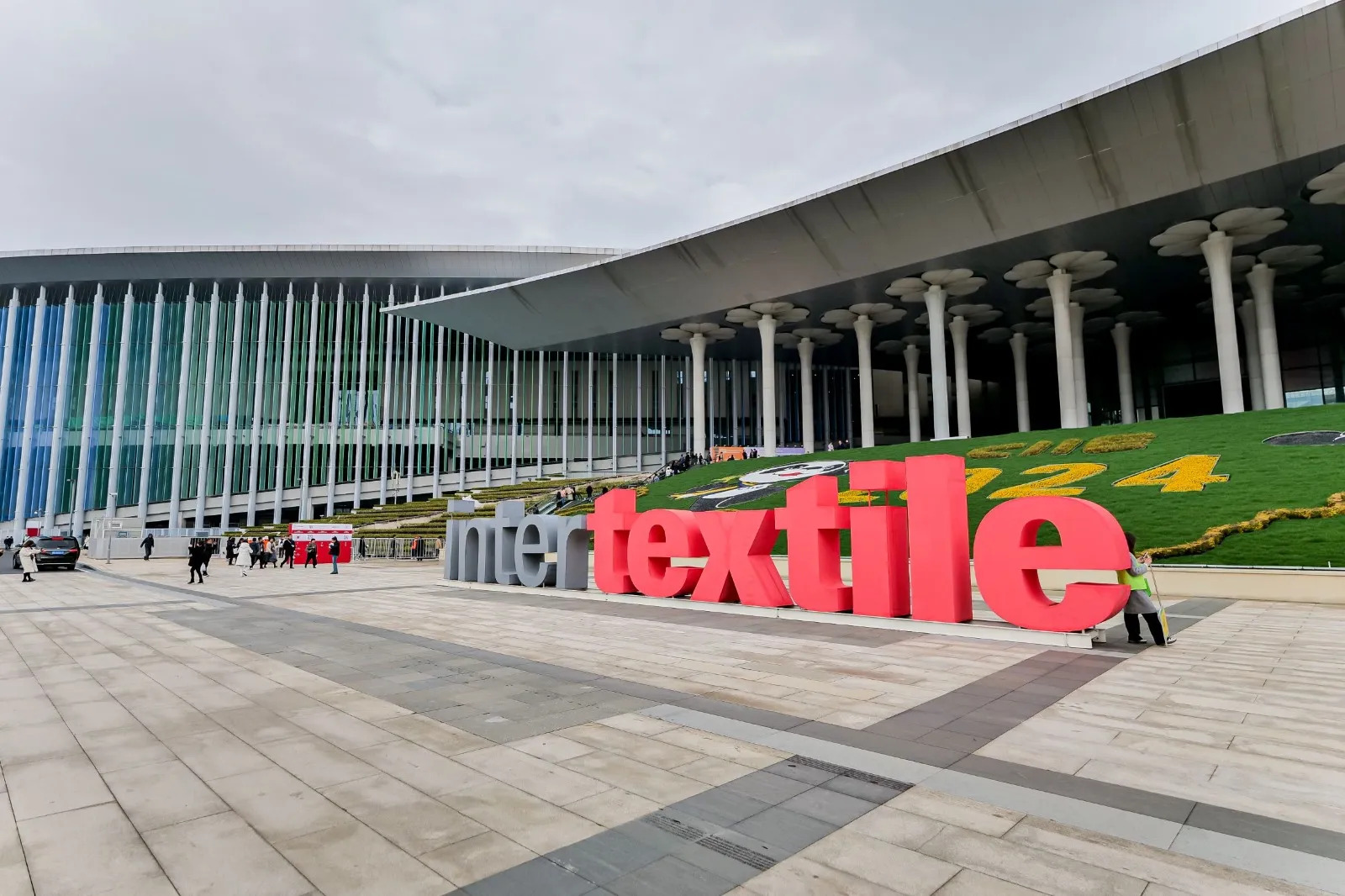
As the global fashion supply chain rapidly evolves through technological advancements, China continues to cement its role as a leader in textile innovation. Against this backdrop, Intertextile Shanghai Apparel Fabrics – Spring Edition 2026 is set to kick off the new sourcing season from March 11–13, 2026, at the National Exhibition and Convention Center (Shanghai). The upcoming fair is sharpening its focus on being fashion-forward while strongly embracing crucial trends in sustainable, performance, and future textiles.
Market challenges persist for the industry worldwide, making collaboration and innovation more vital than ever. Wilmet Shea, General Manager, Messe Frankfurt (HK), notes, the fair's breadth, scale, business connections, and focus on ‘what's next’ are more important than than ever," she stated. The Spring Edition aims to build on the success of 2025, continuing to place a greater emphasis on AI and digital innovation while expanding its offerings in sustainable and performance-related fabrics.
Leading the charge in sustainability
The show's strategy of aligning with both international and domestic market demands is yielding significant results, particularly in environmental efforts. For example, the Chinese textile industrysuccessfully decreased its emissions intensity by 60 per cent between 2005 and 2022, with a further 14 per cent reduction from 2022 to 2024.
Reflecting this industry priority, Intertextile Apparel's dedicated sustainability zone, the Econogy Hub, experienced a scale increase of over 60 per cent between its 2024 and 2025 Autumn Editions. At the 2026 Spring Edition, this zone will feature an open booth design, enhanced seminar areas, and specialized displays. It is slated to welcome a diverse array of innovative textile suppliers, alongside essential testing and certification institutions. To further simplify the sourcing process, the Econogy Finder tool will help visitors conveniently locate sustainable suppliers throughout the fairground.
Innovation, AI, and next-generation sourcing
The enhanced Innovation & Digital Solutions Zone will be the epicenter for cutting-edge textile technologies. Through exhibits and a complementary seminar series, suppliers will showcase the latest AI-related applications. Past participation from organizations like AiDLab, HKRITA, and Shima Seiki attests to the zone’s success in connecting forward-thinking exhibitors with relevant buyers eager to invest in the future of manufacturing.
Capturing global and Gen Z trends
The fair is also keenly focused on meeting the demands of the next generation of consumers. With Gen Z being highly interconnected, trends originating in China - such as Chinese-style clothing - are increasingly transcending domestic boundaries and reaching international fashion markets. This presents compelling business opportunities for fashion-forward exhibitors in specialized zones like Accessories Vision, Beyond Denim, and Verve for Design.
Simultaneously, the athleisure trend has matured, evolving beyond simple activewear toward more utilitarian and functional styles. Suppliers in the Functional Lab zone are well-positioned to capitalize on this shift, offering high-performance materials suited for modern, versatile wardrobes. The strong positive feedback from the 2025 edition provides solid momentum for the upcoming show. Exhibitors like Karen Yang, Eastman Chemical praised the fair as an ideal platform to debut innovations, noting that the buyers are forward-thinking and eager to try new things. Similarly, Eileen Tay, Creative Director, ingapore, highlighted the convenience of Shanghai as a major hub and the valuable presence of leading European and Japanese suppliers at Intertextile Apparel, making it an indispensable sourcing destination.


